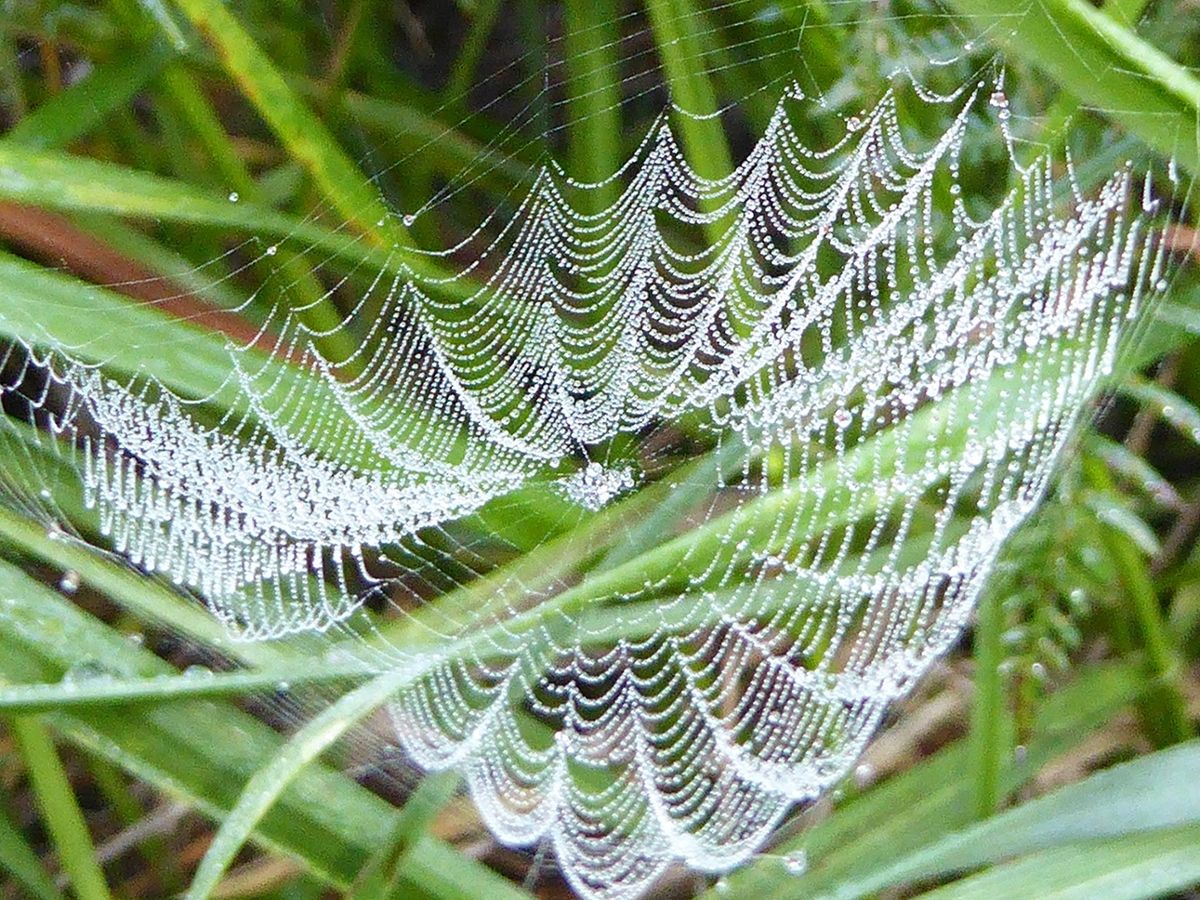D: Yael, you know how some spider webs look as though they were thrown together at the last minute, while others look as though they were meticulously planned months in advance?
Y: That's right, Don. Some webs look tangled, while others look like delicate, perfect wheels. The latter are called orb webs. Two different groups of spiders create them, araneoids and deinopoids. Araneoids are more numerous and include golden silk orb-weaver spiders, commonly called banana spiders.
D: Well, they must have taken a long time to evolve such intricate webs, don't you think?
Y: I don't know, but evidence suggests that orb webs have been around for a long time. Araneoids and deinopoids diverged from a common ancestor about 136 million years ago. Scientists have discovered that the two groups share similar silk-making proteins, suggesting that the orb web probably evolved before the two groups diverged.
D: So spiders have been making orb webs since as far back as when dinosaurs still inhabited our planet?
Y: Looks like it. In fact, scientists also discovered a piece of amber preserving some remains of a spider web dating back 110 million years ago. The silk strands themselves are too fragmented to determine the web's design, but some gluey droplets also preserved in the amber provide a clue.
D: A clue of glue? Do tell.
Y: Glue is a characteristic of the webs of araneoid spiders. They have special glands that produce the glue, which makes for a highly efficient way to trap prey. If an insect flies into its web, it's stuck before it knows what happened. And judging by the remains of four flying insects also preserved in the piece of amber, this gluey web served its purpose well.










